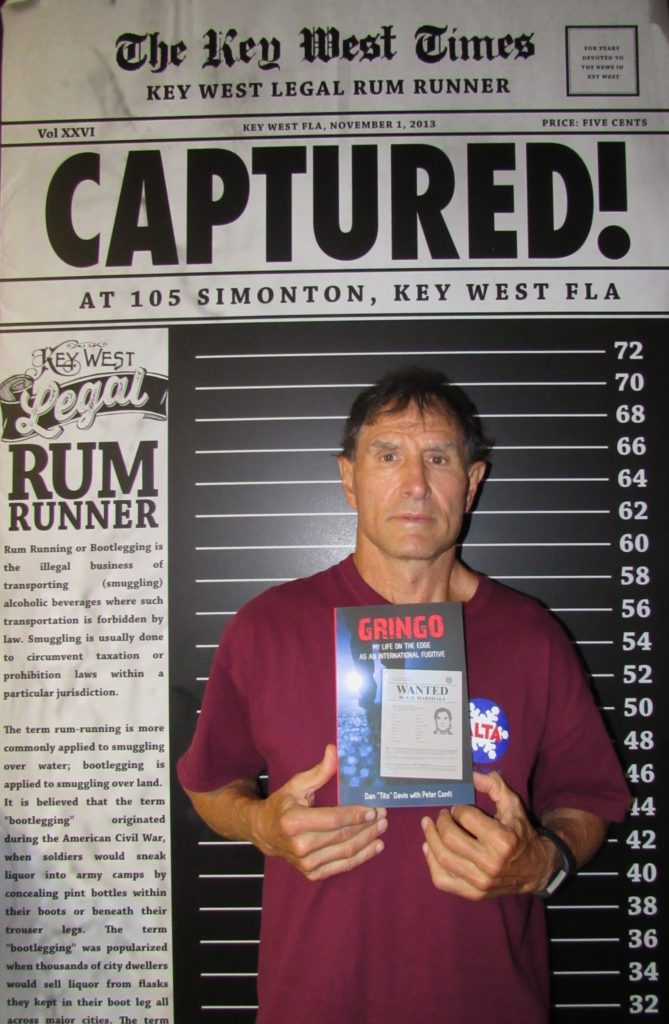So when an author writes thrillers, you’re taking on the responsibility of maintaining a believable environment for your reader within the constraints of what is your “real world”. Dan Brown has centuries-old conspiracies, Clive Cussler often has world-threatening evil villains that must be stopped by a small group of talented individuals. Tom Clancy started World War III but kept it believable by only using modern and realistic technology. Thrillers can crossover with science fiction by creating new technology or potential natural disaster, but still within the confines of a world that is ours, and not something too far off.
So this brings up the phrase “truth is stranger than fiction.” Sure highly realistic fiction is as close to the truth as it can be, but are still fiction, made up stories to entertain. When you tell a truthful story, it’s just that, a true story without embellishments or fiction that might entertain, but isn’t necessarily the point. The truth should be enough for the reader or viewer, no need to make it stranger. And sometimes a true story can stretch into situations that make you think “this can’t be true.” And when it is, that’s where truth becomes stranger than fiction.
The world is full of true stories that strain your credibility. A child survives a tornado without a scratch, while the house around it is destroyed. A pet finds its way home across a continent to be reunited with its human family. These are stories that end up being told over and over again, movies get made of them and at the beginning or end of the movie up pops the “Based on a true story” comment.
So that brings us to a story that if made into a movie will have that same “based on a true story” tag. It’s the story of a kid from South Dakota that couldn’t learn his lesson the first time he was sent to prison. Caught avoiding taxes from his perfectly legal amphetamine business (white crosses) Dan “Tito” Davis did 5 years in a federal prison. After getting out and needing to make up for lost time, Tito moved from legal weight loss pills to marijuana. And 15 years ago, getting caught dealing in pot was a big deal. More so than what its become in many states.
So one of Tito’s customers was also selling meth. And when caught with both meth and pot, this former friend pointed the finger at Tito as his source for both, angling to get his potential time reduced by bringing someone else in. This is legal terms is what is called “the last man standing”. The first one to roll gets the lightest sentence. Each new arrest goes up the food chain until supposedly the top boss is caught. But more often its a situation like this – someone tangentially associated with the crime that can’t defend themselves on at least one part and ends up holding the bag for more senior people who know how the game gets played and cut deals the fastest.
So Tito is now facing fighting a major methamphetamine charge, one that carries what could turn into a life sentence even for a young man, and he made a choice. Having just married, it probably wasn’t an easy choice, but he made it and went on the run from the US government. Having met cartel people during his first sentence, he had contacts to get him started into his new life, but it wasn’t easy, even then.
Tito’s memoir “GRINGO My Life on the Edge as an International Fugitive” details out his new life, first having to go back to elementary school to learn Spanish well enough to move around, to crossing the globe from one dangerous place to another always with one eye over his shoulder waiting for someone to finally catch up with him. Imagine having a go-bag always on hand with just enough stuff to get you to the next “safe” place in the event you have to move on immediately. Crossing borders with fake passports, trying to blend in with a bus of tourists, while at the same time trying to not be memorable to the people you’re using as cover.
Using colored markers to hide money, constantly changing names and always wondering if you can trust anyone around you isn’t a life many people could handle. But Tito did it for 13 years, eventually settling down in Venezuela which did not have an extradition treaty with the US at that time (and still does not, even now). Back then Hugo Chavez was calling the President George W Bush the devil at the UN and refusing to help with any US policies in South America. And Tito started a new life, with a business, business partners, and a new wife. And it was that relaxation after so long on the run that led to his capture.
Walking through a hotel lobby, all those hard-earned lessons on survival suddenly came back to him – as he saw multiple men and SUVs waiting for him. Grabbed, hooded and cuffed, Tito was thrown into one of the SUVs and moved to an off-the-books detention facility. Tito was the victim of irregular rendition – kidnapped from a foreign country and eventually returned to his home country. This is different than the rendition often heard about in the war on terror. Extraordinary rendition takes someone from one country to a third country where they aren’t bound by the host country laws. Many of the Al-Qaida fighters renditioned were caught on the battlefield or on off the streets and taken to black site prisons in Syria, Egypt, Poland or to Guantanamo in Cuba. Lucky for Tito that wasn’t to be his fate, he was put on a US plane and flown back to Miami where he was turned over to the US Marshals. Was his kidnapping legal? According to US courts, it is, even if it violates the laws of the country where the kidnapping takes place.
Foreign countries are still now dealing with some of the issues involved with the renditions that took place within their borders. Italy convicted 26 Americans in absentia for the abduction of radical Egyptian cleric Abu Omar off a street in Milan in 2003. But kidnapping an American and bringing them back to US soil for prosecution has been considered legal since the mid-1800s with the kidnapping of John Surratt from Egypt for his potential help with the assassination of President Lincoln.
How many American citizens get renditioned every year? No one knows. During Tito’s trial, the court and prosecution wouldn’t let him discuss it or acknowledge his kidnapping in the court transcript. The closest they came to mentioning it was calling it being “ejected” from Venezuela. But that doesn’t capture the essence of being grabbed at gunpoint by mercenaries that aren’t part of a government (and therefore no one to hold them responsible for anything that happens) and then held for days without access to any legal assistance or authority. If it walks like a duck, quack likes a duck it sure seems like kidnapping, even it the US government won’t admit to it. And as such its a violation of the host country’s sovereignty, but very few are willing to challenge it. Italy is the exception to the first rule of rendition club – don’t talk about rendition when the US does it on your soil.
So Tito is a member of an exclusive club – Americans that have been kidnapped by their own government, against the laws of the host country (not done through normal extradition), and forcefully returned to the US. He might be the only living person that has gone through that. It’s an exclusive club that I don’t think anyone wants to be in but just happens to those folks so far out on a limb legally.
So what happened to Tito? He was finally convicted of a marijuana charge. His former customer recanted his original testimony so he did a second prison sentence for 10 years and is now finally a free man and able to travel under his own name back through those same countries he once had to hide in. And his advice for others now? Don’t follow in his footsteps, but learn from his story and avoid anything that could lead to your own potential rendition. It’s not a club you want to join.
And his story? Not stranger than fiction, but definitely a story to hear. And when it’s eventually turned into a movie or show, one to enjoy watching vicariously. And keep an eye out for the “Based on a true story” at the end.
Graham Brown – Author






Leave A Comment